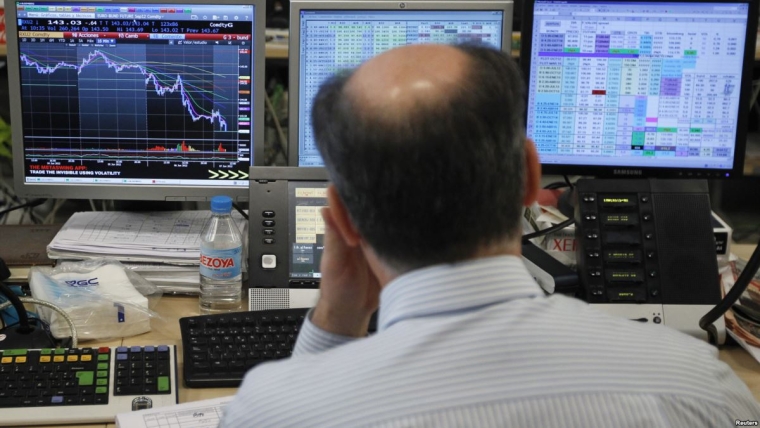
Trump’s plan to raise tariffs on Chinese imports from 1 September reverberated through markets on Friday, seeing a shift to safe haven JPY and CHF currencies, lower equity markets and global bond yields falling to new lows.
The NZD found some support just above 0.65 but threatens to make fresh year-to-date lows over coming weeks.
Early Friday NZ time, Trump threw a curveball with a plan to place 10% tariffs on the remaining $300b of Chinese imports. There is some debate about whether this move was a direct response to trade negotiations in Shanghai earlier in the week in which no progress was made, or a direct response to the Fed’s “insurance” rate cut of 25bps, with Trump trying to engineer some market turmoil to encourage a more aggressive fed easing cycle. There is probably an element of truth in both.
China’s Commerce Ministry issued a statement saying that China will have to take necessary countermeasures to resolutely defend it core interests, while a Finance Ministry spokeswoman said that “China won’t accept any maximum pressure, threat, or blackmailing, and won’t compromise at all on major principle matters”.
The escalation of the US-China trade war throws considerable doubt that any trade agreement will now be reached under Trump’s administration, with fresh tariffs making it less likely that China will give in to Trump’s demands. More tariffs will further disrupt global supply chains, reduce business confidence, add to the downside pressure in global economic momentum and pressure on central banks to ease monetary policy. The US consumer will see a greater impact, with the next round of tariffs focused on consumer goods.
Market sentiment switched into a risk-off mode as soon as Trump’s tweet hit the screen. Global equities ended the week on a poor note, with indices down 2½-3% across Europe and the S&P500 down 0.7%, capping off its weakest week this year, down 3.1%.
Global bond yields fell to fresh record lows across much of the world, with Germany’s 10-year rate down 5bps to minus 0.50% and its 30-year rate briefly going negative for the first time. The US curve continued to flatten with the 2s10s gap falling to 13bps, getting close to the December low of 9bps. The 10-year rate traded down to a low of 1.83%, a rate not seen since November 2016, before closing the day down 5bps at 1.845%.
With the market focused on the trade war, economic data releases were largely academic. US payrolls were in line with market expectations, although there was a slightly softer underbelly, with modest downward revisions to employment, a 0.3% fall in the workweek and rather than nudging lower the unemployment rate was steady at 3.7%. Wage inflation was slightly stronger than expected. The final reading for the University of Michigan consumer sentiment index remained at a historically high level. Trade data highlighted the reduced two-way trade flow between the US and China, with US exports to China down 18% y/y in the first six months of the year and imports from China down 12%. Over recent months, China has lost its top trading partner spot with the US, and is now third to Mexico and Canada.
In commodity markets, oil prices recovered 2-3% after 7-8% falls in the previous trading session. Copper prices, a bellwether for global growth expectations, fell by 3½%, taking losses over the past couple of weeks to 7%.
Safe haven currencies CHF and JPY topped the leaderboard for the day, with USD/JPY down 0.7% to 106.60. NZD/JPY fell by over 1% to close the week at 69.66 challenging levels not seen since 2012 (apart from a few intraday flash crashes in recent years).
That the NZD fell by only 0.3% to 0.6535 for the day is somewhat of a miracle and perhaps “saved” by the expectation that the Fed easing cycle will be more aggressive, with the low in the Fed Funds rate now priced at 1.22%. The NZD found some support just above the 0.65 mark but threatens to reach fresh lows over coming weeks. Technical support levels are near the May low of 0.6480 and then the 2018 low of 0.6425. We’ll be watching CNY closely, given the strong link between the NZD and CNY since the trade war began last week and USD/CNY threatening to break the symbolic 7.0 mark.
The AUD closed the week at 0.68 after earlier probing a fresh multi-year low (excluding the 3-Jan flash crash) near 0.6760. EUR and GBP eked out modest gains against the USD.
NZ rates reached fresh record lows during the local trading session and the yield curve flattened. The 2-year swap rate fell by 4bps to 1.20% and the 10-year rate fell by 10bps to 1.54%. The NZ 10-year government rate fell by 9bps to 1.36%. The RBNZ meets Wednesday and is universally expected to cut the OCR by 25bps to 1.25%. Against a backdrop of slowing global and domestic growth another cut to 1% is almost fully priced by November, with half a chance of a move to 0.75% early next year. No doubt the press conference will be focused on how low can rates go and what other measures the RBNZ will be considering as rates approach the lower bound. We’ll be interested to see how much pushback the Bank will provide, if any, to this line of questioning.
The key data release tonight would normally be the US non-manufacturing ISM, but most data releases over coming weeks are likely to be treated as out-of-date, as the prospect of fresh tariffs approaches and more weight is given to the economic outlook.

We welcome your comments below. If you are not already registered, please register to comment
Remember we welcome robust, respectful and insightful debate. We don't welcome abusive or defamatory comments and will de-register those repeatedly making such comments. Our current comment policy is here.